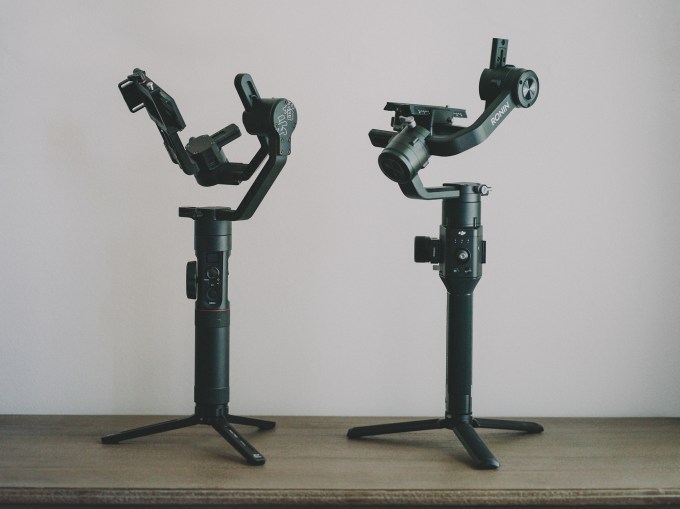There are only so many times I can pan and rack focus on a tripod before it gets boring. Whenever I see footage shot from a gimbal I get a little envious, but I was blessed with a scrawny build and flimsy arms. The last time I tried to use a gimbal was with the Ronin-M, for approximately three minutes before my biceps gave out. Prior to that, the Glidecam 3000 exactly twice — because balancing was a pain in the ass.
My production friends recommended the Zhiyun Crane 2 as a compact solution; this seems to be the choice for run and gun documentary filmmakers and wedding videographers. I spent a good month with the gimbal back in June and it easily became my favorite piece of gear.
Then DJI released the Ronin-S. Three weeks later, I’m not so sure anymore.
Handling and weight
Unless you’ve been operating gimbals for a while, you’re not going to unbox either of these two and immediately get smooth shots. It took a week of practicing the dopey gimbal walk and a whole lot of ugly footage before I was finally happy with the results.
Weight-wise, the Ronin-S is 1.34 pounds heavier than the Crane 2, with an extra pound of payload capacity. The Canon 5D and 35mm mounted on on both without any problems. The difference isn’t that drastic since the weight distribution on the Ronin-S is pretty balanced; it doesn’t feel awkward.

L: Zhiyun Crane 2, R: DJI Ronin-S
The camera’s viewfinder is slightly obstructed by the roll axis on the Crane 2, whereas DJI designed their gimbal to have this positioned below the base plate. Despite this small nuisance, operating both felt similar. Taylor, who was helping as Second Camera and has never handled a gimbal before this review, disagrees; “This (the Ronin-S) feels waaaay better.”
Balancing
Both gimbals use the same balancing technique and require the same amount of effort. With the guidance of several YouTube tutorials, my first attempt balancing the Crane 2 took about half an hour. After several tries, I was able to balance each, on average, in two minutes.
One plus with the Ronin-S: Their app includes a Balance Test function to make sure the gimbal is properly balanced. Otherwise, if not, the motor will overwork to compensate and drain the battery (and eventually kill the motor).
Controls
For basic walking, slides and pans, both gimbals excelled, so I didn’t think it would be a huge task shooting my friend Brandon performing Wushu without any planning. Big mistake. Chasing after him jumping up and down, spinning left, right, forwards and backwards was exhausting and the Ronin-S couldn’t catch up. The sports mode only seemed to work when he wasn’t rapidly moving in all directions. I had to adjust and fine tune the tilt, roll and pan and make several attempts before it became a dance between gimbal and subject.
One minor issue with the Crane 2 — the menu dial is not intuitive. I kept pressing the button in the middle to select my options. You actually have to tap right to select.
Carrying case

The Crane 2 gets one point for having a sexier case with a shoulder strap. I’m not a huge fan of Ronin-S’s foam case and you have to play Tetris the first few times to get the gimbal back in. A small gripe about both cases: You have to unbalance the gimbal in order for it to fit back in. It only takes two minutes to balance the gimbals, but it gets cumbersome having to do this every time you take it out of the case, especially in run-and-gun situations.
Final thoughts

They’re both solid gimbals that’ll get the job done, but with the added creative functions on the Ronin-S, like time-lapse, panorama and more control via their app… I ended up shelling out $700 for the Ronin-S last Friday at a DJI workshop. A Zhiyun rep told me they’re working on a competing gimbal, the Crane 3, tentatively scheduled for a September 2018 released. In the meantime, I’m pretty happy with my purchase.